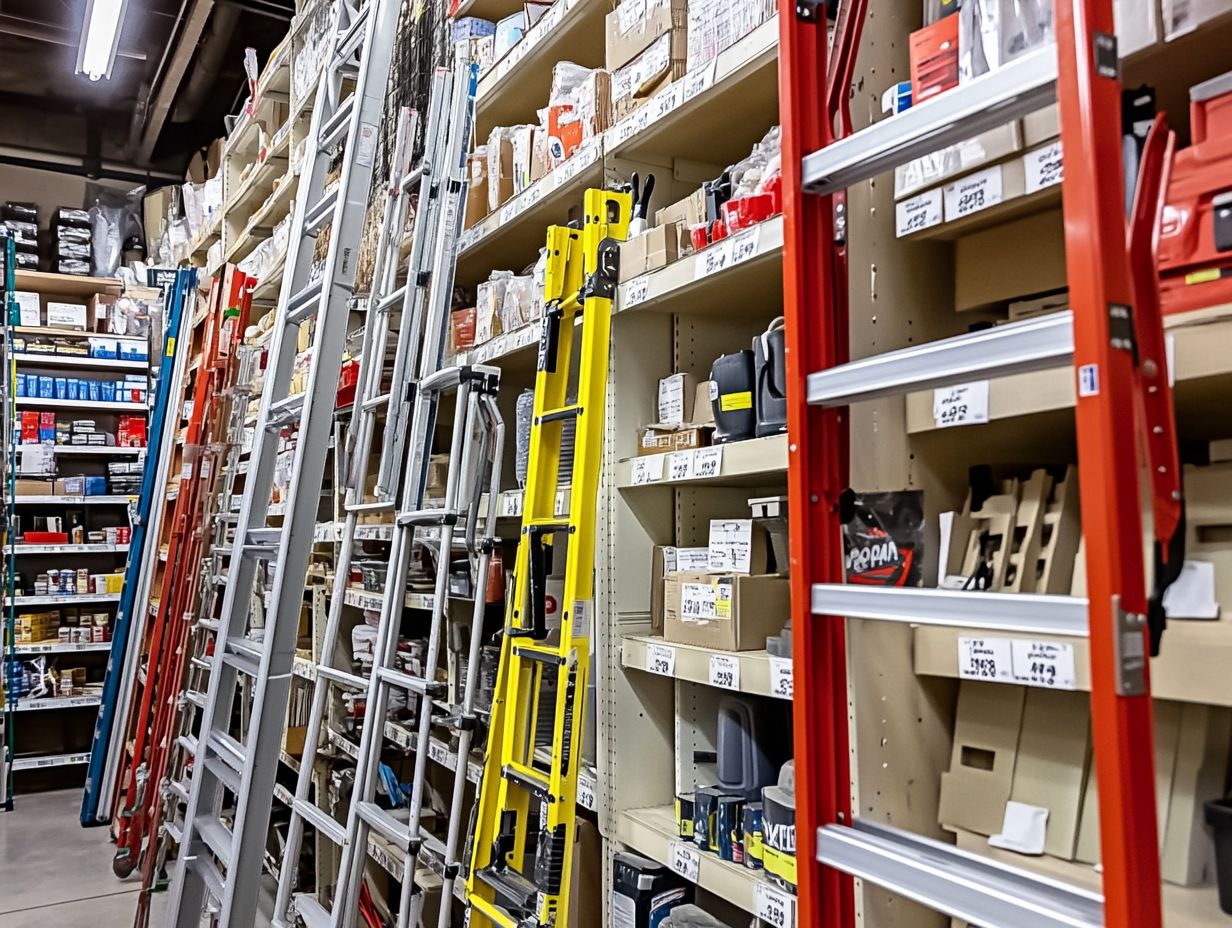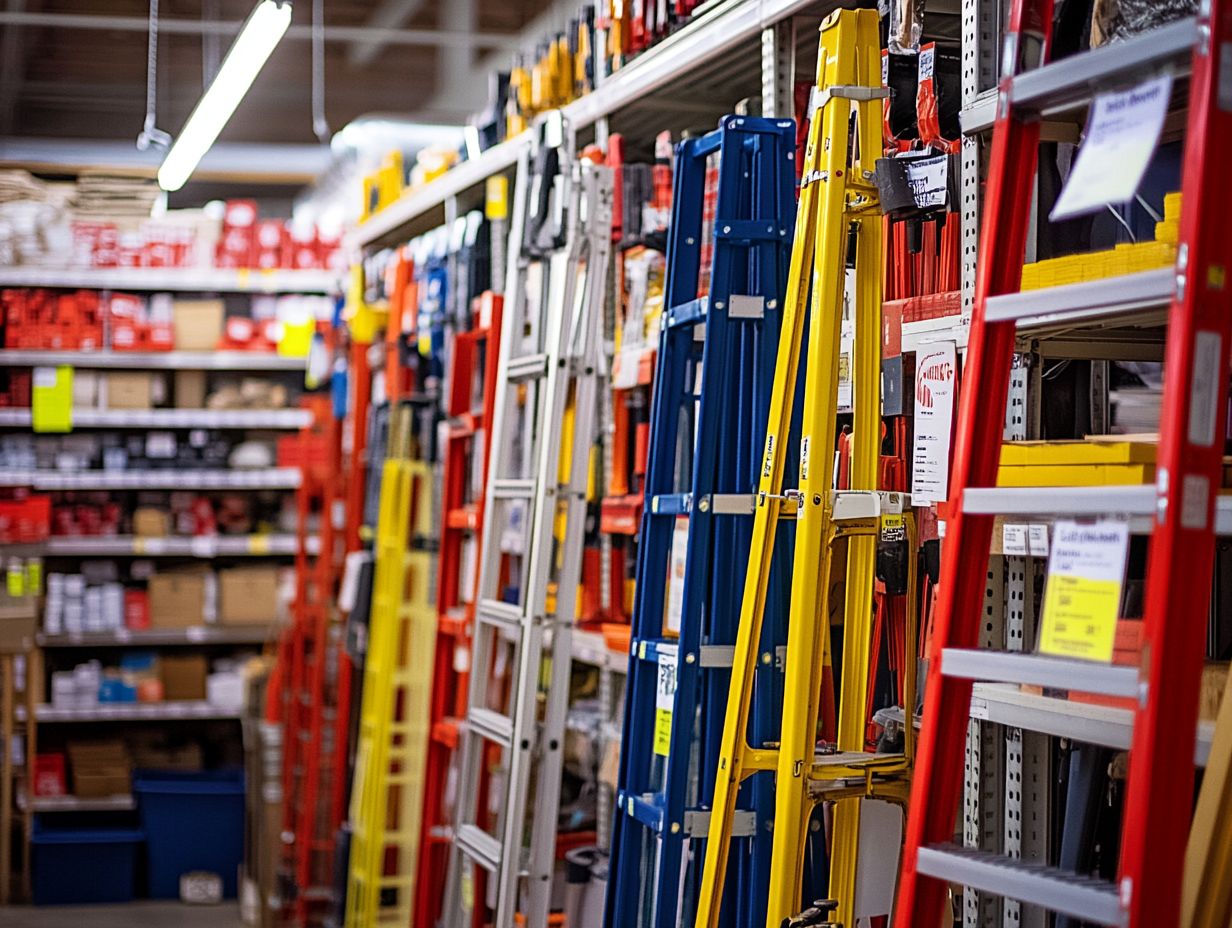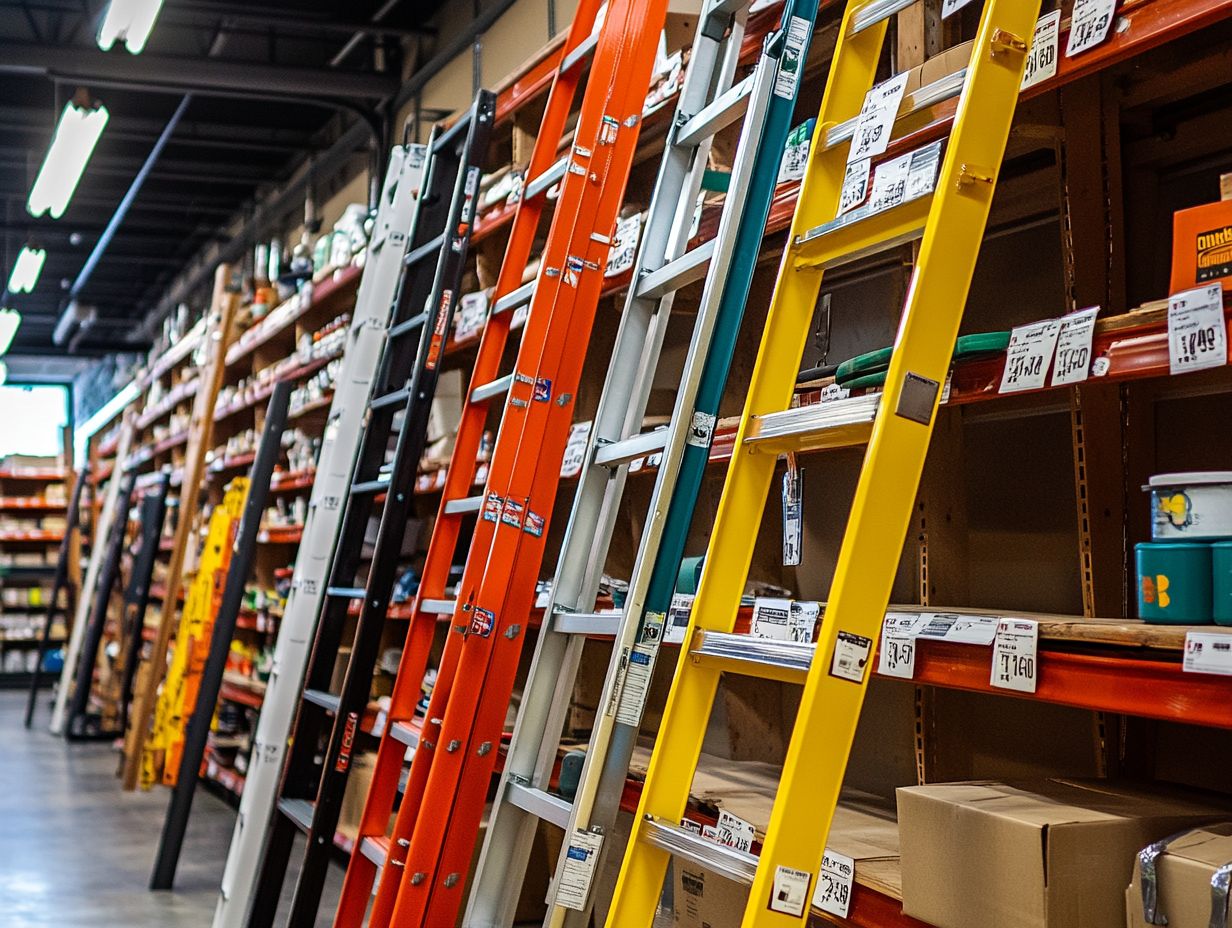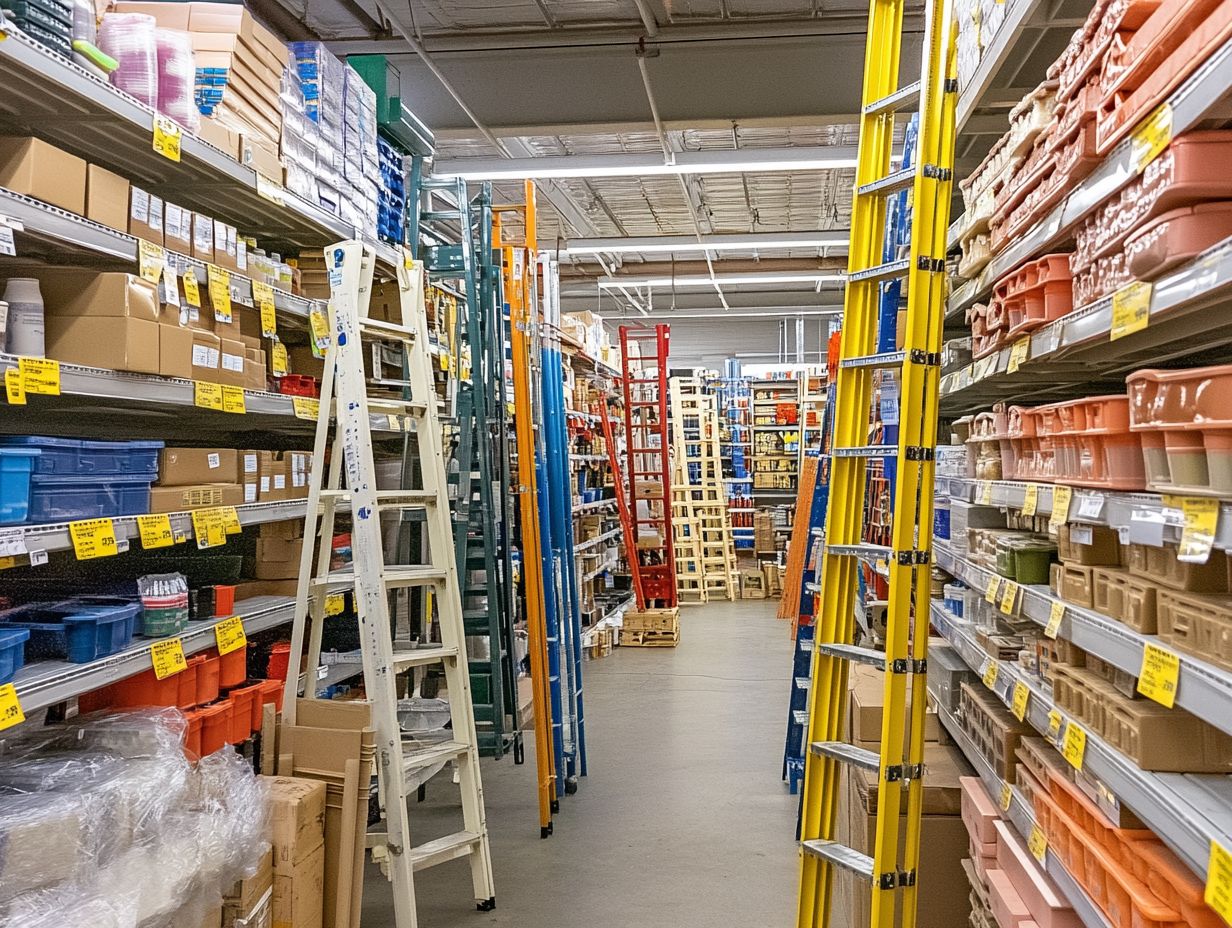Selecting the appropriate ladder is crucial, whether one is engaged in home improvement projects, accessing difficult-to-reach areas, or operating within a professional environment.
This guide provides a comprehensive overview of the essential steps to identify specific ladder requirements, examine various types of ladders, and evaluate critical factors such as weight capacity and portability.
By emphasizing safety features, reputable brands, and budget-friendly options, this resource will equip individuals with the necessary knowledge to make an informed decision that perfectly aligns with their requirements.
Understanding Your Needs

Understanding your requirements regarding ladders is essential for selecting the appropriate type for your specific tasks, whether they pertain to home improvement projects, DIY initiatives, or professional applications in construction.
Given the variety of ladder types available—including extension ladders, step ladders, and telescoping ladders—it is crucial to evaluate factors such as ladder height, weight capacity, and ergonomics to maximize your climbing experience.
By carefully assessing your ladder needs, you can ensure optimal safety and efficiency in your work.
Assessing Your Specific Ladder Needs
When assessing specific ladder requirements, it is important to consider critical factors such as the necessary ladder height for your workspace, its weight capacity, and the climbing techniques with which you are comfortable to ensure safe usage.
It is essential to evaluate the range of tasks that will be performed with the ladder, as different jobs may require specific design features. A comprehensive understanding of the ladder’s construction materials and stability can significantly influence its usability.
Regular inspections are vital to identify potential hazards, such as loose rungs or corrosion, which could compromise safety. A clear understanding of the height and weight limits is crucial in selecting the appropriate ladder that can meet your requirements without incurring risk.
This meticulous approach not only promotes a safer working environment but also enhances overall productivity when engaging in work at height.
Types of Ladders
There are various types of ladders available, each engineered for specific tasks and scenarios. Extension ladders are designed for reaching greater heights, while step ladders provide enhanced stability for tasks at lower elevations. Additionally, multi-purpose ladders offer versatility for a range of projects.
Familiarity with these types and their respective features is essential for making informed decisions that align with your work environment and the nature of your projects. Furthermore, the portability of these ladders can influence your selection process, as certain models may be more convenient to transport than others.
Overview of Different Ladder Types

There are several types of ladders available, each designed to meet specific needs. These include:
- Telescoping ladders, which offer adjustable heights;
- Aluminum ladders, recognized for their lightweight construction;
- Fiberglass ladders, which are particularly suitable for electrical work due to their non-conductive materials.
Each ladder type serves a distinct purpose, making it imperative to select one that aligns with your specific requirements. Telescoping ladders can extend from a compact size to heights ranging from 12 to 16 feet, providing versatility for accessing various workspaces while remaining easy to store and transport.
In contrast, aluminum ladders typically measure between 5 and 24 feet, offering a combination of strength and portability, making them an excellent choice for tasks such as home maintenance or painting.
Fiberglass ladders, available in heights from 4 to 40 feet, are designed for professionals working in proximity to electrical hazards, ensuring safety and stability through their non-conductive properties.
It is essential to adhere to the recommended safety standards when using these ladders to prevent accidents and ensure optimal functionality.
Factors to Consider When Choosing a Ladder
When selecting a ladder, it is crucial to consider several important factors, including the ladder’s features, weight capacity, and the materials from which it is constructed. These considerations are vital to ensuring safety, durability, and optimal performance.
The stability of a ladder is of utmost importance, particularly when working at elevated heights. By thoroughly understanding these factors, individuals can make an informed decision that aligns with their specific requirements.
Weight Capacity and Material
Understanding the weight capacity and materials of ladders is essential for ensuring safety and effectiveness in their use. Aluminum ladders are renowned for being lightweight yet strong, making them a popular choice for various applications. Conversely, fiberglass ladders offer enhanced safety for electrical tasks due to their non-conductive properties.
Wooden ladders provide a traditional aesthetic and are generally robust for domestic use; however, they tend to be heavier and may exhibit reduced durability over time, particularly when subjected to outdoor elements. Each type of ladder possesses its own specific weight capacity, which is a critical consideration. For example, an aluminum ladder typically supports up to 300 pounds, while a sturdy fiberglass model may accommodate even greater weight, making it more suitable for demanding tasks.
When selecting the appropriate ladder, it is vital to consider not only the material but also the required height for your project and the maximum load it must support. This ensures both safety and efficiency in the completion of your tasks.
Height and Reach

Selecting the appropriate ladder height and reach capability is essential for ensuring safety and efficiency, particularly when working on roofs or trees, where specific types of ladders may be required for optimal access.
To accurately determine the suitable ladder height, one must take into account both the nature of the task and the height of the work surface. It is recommended to leave a minimum of three rungs unoccupied from the top of the ladder to maintain stability during use.
In situations such as roof work, utilizing a ladder that is compatible with the ascent angle, such as an extension ladder, promotes safer positioning. Likewise, for activities such as painting a wall or accessing elevated shelves, a step ladder can provide necessary support without compromising safety.
Ensuring that the selected ladder complies with American National Standards Institute (ANSI) recommendations can further reduce the risks associated with falls.
Portability and Storage
Portability and storage solutions are critical factors to consider when selecting a ladder. Folding ladders, in particular, provide the advantage of easy transport and compact storage while maintaining stability and safety.
In managing ladder transport, it is important for individuals to assess various features that enhance mobility, such as lightweight materials and integrated wheels. Choosing ladders designed with collapsible frames can significantly assist users in maneuvering through tight spaces and transporting their equipment between job sites.
Making informed decisions regarding ladder storage is essential; utilizing wall brackets or storage hooks can optimize space while ensuring that ladders are elevated off the ground and safeguarded from potential damage. Implementing these strategies not only extends the lifespan of the ladder but also promotes safer access to elevated areas.
Safety Features to Look For
When selecting a ladder, safety features are of utmost importance, as they can substantially reduce the risk of accidents and injuries during use.
It is essential to look for features such as non-slip feet and to conduct stability tests to ensure that the ladder meets established safety standards.
Important Safety Considerations

Important safety considerations when utilizing a ladder include strict adherence to ladder safety regulations, conducting regular inspections through a comprehensive checklist, and employing appropriate safety gear to protect users from potential hazards.
These elements not only enhance the overall stability of the ladder but also ensure that operators are well-informed and prepared for any unforeseen circumstances. Recognizing the significance of compliance with OSHA regulations and ANSI standards is essential, as these guidelines establish a framework for minimizing risks associated with ladder use.
Regular inspections are imperative; identifying any signs of wear, tear, or damage can prevent accidents before they occur. Furthermore, wearing the appropriate safety gear, such as helmets and non-slip footwear, provides additional protection, enabling individuals to concentrate on their tasks without unnecessary concern.
Top Ladder Brands and Models
When evaluating leading ladder brands and models, it is essential to consider user reviews and the reputations of manufacturers. These factors can provide valuable insights into the quality, durability, and effectiveness of various ladder options available in the market.
Highly Rated Ladder Options
Highly rated ladder options typically include brands that excel in user ratings and provide comprehensive ladder specifications, ensuring that customers receive reliable and safe products tailored to their needs.
These ladders not only meet but exceed established safety standards, offering both casual users and professionals peace of mind while engaged in their tasks. User testimonials frequently emphasize the superior build quality and user-friendly designs, which often incorporate lightweight materials for ease of transport alongside sturdy construction that enhances stability.
Such products generally offer a diverse range of heights and styles to accommodate various applications, from routine home maintenance to more demanding construction projects. Safety ratings are of paramount importance when selecting a ladder, as many top-rated options are equipped with non-slip feet and locking mechanisms that significantly mitigate the risk of accidents.
Budget-Friendly Ladders
Identifying budget-friendly ladders that maintain high standards of safety and quality is crucial for many consumers, as cost-effectiveness is a significant factor in the purchasing decision.
By comparing prices and features of various models, individuals can discern affordable ladders that fulfill their requirements without exceeding their budget.
Affordable Yet Reliable Ladders
When seeking affordable yet dependable ladders, it is essential to prioritize models with robust specifications that provide excellent value while satisfying safety and usability standards.
Options such as the Little Giant Flip-N-Lite and the Werner 7170 exemplify affordable models that merge lightweight design with commendable load capacities. The Flip-N-Lite is particularly well-suited for home projects, offering both portability and durability. It boasts a 300-pound capacity while maintaining a slim profile for convenient storage.
Conversely, the Werner ladder is designed with slip-resistant steps, which significantly enhance safety during various tasks. Both models are suitable for DIY enthusiasts and professionals, illustrating that affordability does not compromise reliability in home improvement efforts.


